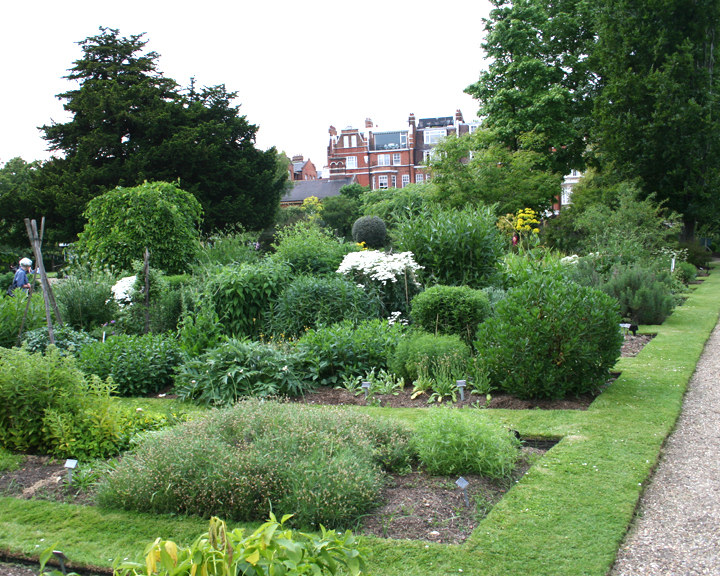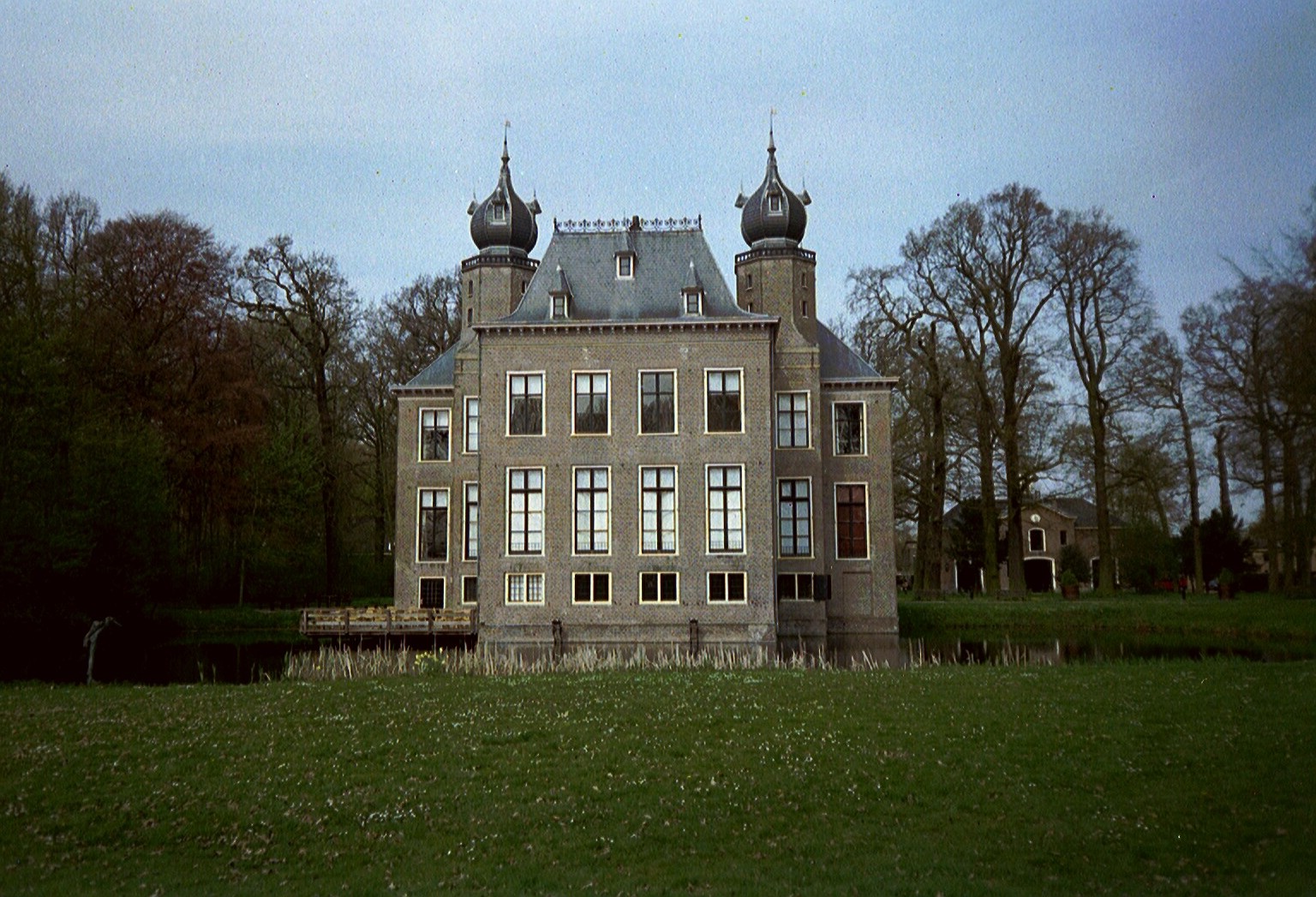|
Isaac Rand
Isaac Rand (1674–1743) was an English botanist and apothecary, who was a lecturer and director at the Chelsea Physic Garden. Life Isaac was probably son of James Rand, who in 1674 agreed, with thirteen other members of the Society of Apothecaries, to build a wall round the Chelsea Botanical Garden. Isaac Rand was already an apothecary practising in the Haymarket, London, in 1700. The year of his death is given by Dawson Turner as 1743 (Richardson Correspondence, p. 125); but he was succeeded in the office of demonstrator by Joseph Miller in 1738 or 1740. Works In Leonard Plukenet's ''Mantissa,'' published in that year, he is mentioned as the discoverer, in Tothill Fields, Westminster, of the plant now known as ''Rumex palustris'', and was described (p. 112) as "stirpium indagator diligentissimus ... pharmacopœus Londinensis, et magnæ spei botanicus.' He seems to have paid particular attention to inconspicuous plants, especially in the neighbourhood of London. Thus ... [...More Info...] [...Related Items...] OR: [Wikipedia] [Google] [Baidu] |
Chelsea Physic Garden
The Chelsea Physic Garden was established as the Apothecaries' Garden in London, England, in 1673 by the Worshipful Society of Apothecaries to grow plants to be used as medicines. This four acre physic garden, the term here referring to the science of healing, is among the oldest botanical gardens in Britain, after the University of Oxford Botanic Garden. Its rock garden is the oldest in Europe devoted to alpine plants and Mediterranean plants. The largest fruiting olive tree in Britain is there, protected by the garden's heat-trapping high brick walls, along with what is doubtless the world's northernmost grapefruit growing outdoors. Jealously guarded during the tenure of the Worshipful Society of Apothecaries, the garden became a registered charity in 1983 and was opened to the general public for the first time. The garden is a member of the London Museums of Health & Medicine. It is also Grade I listed in the Register of Historic Parks and Gardens of Special Historic Intere ... [...More Info...] [...Related Items...] OR: [Wikipedia] [Google] [Baidu] |
Dillenius
Johann Jacob Dillen Dillenius (1684 – 2 April 1747) was a German botanist. He is known for his ''Hortus Elthamensis'' ("Eltham Garden") on the rare plants around Eltham, London, and for his ''Historia muscorum'' ("History of Mosses"), a natural history of lower plants including mosses, liverworts, hornworts, lycopods, algae, lichens and fungi. Biography Dillenius was born at Darmstadt and was educated at the University of Giessen, earlier the family name had been changed from Dillen to Dillenius. In 1721, at the instance of the botanist William Sherard (1659–1728), he moved to England. In 1734 Dillenius was appointed Sherardian professor of botany at Oxford, in accordance with the will of Sherard, who at his death in 1728 left the university £3000 for the endowment of the chair, as well as his library and herbarium, all on the condition that Dillenius should be appointed the first professor. Dillenius died at Oxford, of apoplexy. His manuscripts, books and collections o ... [...More Info...] [...Related Items...] OR: [Wikipedia] [Google] [Baidu] |
Singaporandia
''Singaporandia macrophylla'' (Hook.f.) K.M.Wong is a small tree of the family Rubiaceae. It is the only species in the genus ''Singaporandia''. It occurs in lowland dipterocarp forest in Malaysia, Thailand and Sumatra. The genus name of ''Singaporandia'' refers to Singapore, where the plant was first found and also Isaac Rand (1674–1743), who was an English botanist and apothecary, who was a lecturer and director at the Chelsea Physic Garden, London. The genus and species were circumscribed In geometry, the circumscribed circle or circumcircle of a polygon is a circle that passes through all the vertices of the polygon. The center of this circle is called the circumcenter and its radius is called the circumradius. Not every polyg ... by Khoon Meng Wong in Sandakania vol.21 on pages 53 and 54 in 2016. References Gardenieae Monotypic Rubiaceae genera Flora of Thailand Flora of Malaya Flora of Sumatra {{tree-stub ... [...More Info...] [...Related Items...] OR: [Wikipedia] [Google] [Baidu] |
Rubiaceæ
The Rubiaceae are a family of flowering plants, commonly known as the coffee, madder, or bedstraw family. It consists of terrestrial trees, shrubs, lianas, or herbs that are recognizable by simple, opposite leaves with interpetiolar stipules and sympetalous actinomorphic flowers. The family contains about 13,500 species in about 620 genera, which makes it the fourth-largest angiosperm family. Rubiaceae has a cosmopolitan distribution; however, the largest species diversity is concentrated in the tropics and subtropics. Economically important genera include ''Coffea'', the source of coffee, ''Cinchona'', the source of the antimalarial alkaloid quinine, ornamental cultivars (''e.g.'', ''Gardenia'', ''Ixora'', ''Pentas''), and historically some dye plants (''e.g.'', ''Rubia''). Description The Rubiaceae are morphologically easily recognizable as a coherent group by a combination of characters: opposite or whorled leaves that are simple and entire, interpetiolar stipules, tubular ... [...More Info...] [...Related Items...] OR: [Wikipedia] [Google] [Baidu] |
Randia (plant)
''Randia'', commonly known as indigoberry, is a mostly Neotropical genus of shrubs or small trees in the Rubiaceae. Plants of the World Online lists a total of 112 accepted species in the genus. Several Australian species have been reassigned to the genus ''Atractocarpus''. These include the garden plants ''Atractocarpus chartaceus'' and '' A. fitzalanii''. Carl Linnaeus retained the name ''Randia'', applied by Houston to commemorate Isaac Rand. Species of this genus are generally dioecious Dioecy (; ; adj. dioecious , ) is a characteristic of a species, meaning that it has distinct individual organisms (unisexual) that produce male or female gametes, either directly (in animals) or indirectly (in seed plants). Dioecious reproductio ..., with separate male and female plants, although exceptions exist. They are trees, shrubs, and lianas, and may be deciduous or evergreen. Selected species Formerly placed here References * * External links''Randia''at the USDA PLAN ... [...More Info...] [...Related Items...] OR: [Wikipedia] [Google] [Baidu] |
Royal Society
The Royal Society, formally The Royal Society of London for Improving Natural Knowledge, is a learned society and the United Kingdom's national academy of sciences. The society fulfils a number of roles: promoting science and its benefits, recognising excellence in science, supporting outstanding science, providing scientific advice for policy, education and public engagement and fostering international and global co-operation. Founded on 28 November 1660, it was granted a royal charter by King Charles II as The Royal Society and is the oldest continuously existing scientific academy in the world. The society is governed by its Council, which is chaired by the Society's President, according to a set of statutes and standing orders. The members of Council and the President are elected from and by its Fellows, the basic members of the society, who are themselves elected by existing Fellows. , there are about 1,700 fellows, allowed to use the postnominal title FRS (Fellow of the ... [...More Info...] [...Related Items...] OR: [Wikipedia] [Google] [Baidu] |
British Museum
The British Museum is a public museum dedicated to human history, art and culture located in the Bloomsbury area of London. Its permanent collection of eight million works is among the largest and most comprehensive in existence. It documents the story of human culture from its beginnings to the present.Among the national museums in London, sculpture and decorative and applied art are in the Victoria and Albert Museum; the British Museum houses earlier art, non-Western art, prints and drawings. The National Gallery holds the national collection of Western European art to about 1900, while art of the 20th century on is at Tate Modern. Tate Britain holds British Art from 1500 onwards. Books, manuscripts and many works on paper are in the British Library. There are significant overlaps between the coverage of the various collections. The British Museum was the first public national museum to cover all fields of knowledge. The museum was established in 1753, largely b ... [...More Info...] [...Related Items...] OR: [Wikipedia] [Google] [Baidu] |
Samuel Brewer
Samuel Brewer (1670–1743), was an English botanist and contemporary of Dr. Richard Richardson. He is credited with discovering certain species of plant. Life Brewer was a native of Trowbridge in Wiltshire, where he possessed a small estate, and was engaged in the woolen manufacture, but seems to have been unsuccessful in business. He communicated some plants to Dillenius for the third edition of John Ray's ''Synopsis'', published in 1724, and accompanied the editor in 1726 from Trowbridge to the Mendips, and from there to Bristol, passing onward to North Wales and Anglesey. Brewer remained in Bangor for more than a year, botanising with Rev. W. Green and W. Jones, and sending dried plants to Dillenius, particularly mosses, thus clearing up many doubtful points. Yorkshire In the autumn of 1727 he went to Yorkshire, living at Bingley, and afterwards at Bierley, near Dr. Richard Richardson, who befriended him. The loss of £20,000 of his own earnings, and of a large esta ... [...More Info...] [...Related Items...] OR: [Wikipedia] [Google] [Baidu] |
Herman Boerhaave
Herman Boerhaave (, 31 December 1668 – 23 September 1738Underwood, E. Ashworth. "Boerhaave After Three Hundred Years." ''The British Medical Journal'' 4, no. 5634 (1968): 820–25. https://www.jstor.org/stable/20395297.) was a Dutch botanist, chemist, Christian humanist, and physician of European fame. He is regarded as the founder of clinical teaching and of the modern academic hospital and is sometimes referred to as "the father of physiology," along with Venetian physician Santorio Santorio (1561–1636). Boerhaave introduced the quantitative approach into medicine, along with his pupil Albrecht von Haller (1708–1777) and is best known for demonstrating the relation of symptoms to lesions. He was the first to isolate the chemical urea from urine. He was the first physician to put thermometer measurements to clinical practice. His motto was ''Simplex sigillum veri'': 'Simplicity is the sign of the truth'. He is often hailed as the "Dutch Hippocrates". Biography Boerhaave ... [...More Info...] [...Related Items...] OR: [Wikipedia] [Google] [Baidu] |
Leiden Physic Garden
Leiden (; in English and archaic Dutch also Leyden) is a city and municipality in the province of South Holland, Netherlands. The municipality of Leiden has a population of 119,713, but the city forms one densely connected agglomeration with its suburbs Oegstgeest, Leiderdorp, Voorschoten and Zoeterwoude with 206,647 inhabitants. The Netherlands Central Bureau of Statistics (CBS) further includes Katwijk in the agglomeration which makes the total population of the Leiden urban agglomeration 270,879, and in the larger Leiden urban area also Teylingen, Noordwijk, and Noordwijkerhout are included with in total 348,868 inhabitants. Leiden is located on the Oude Rijn, at a distance of some from The Hague to its south and some from Amsterdam to its north. The recreational area of the Kaag Lakes (Kagerplassen) lies just to the northeast of Leiden. A university city since 1575, Leiden has been one of Europe's most prominent scientific centres for more than four centuries. Leiden ... [...More Info...] [...Related Items...] OR: [Wikipedia] [Google] [Baidu] |





